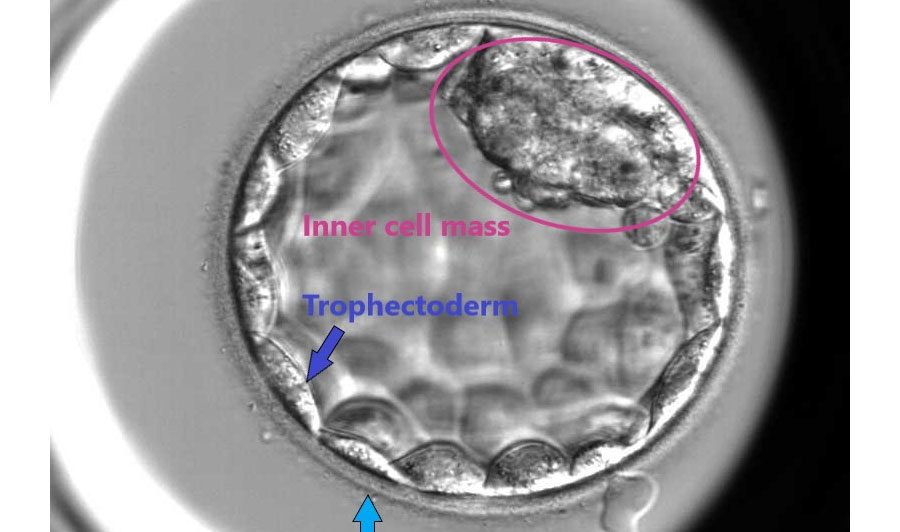
Blastocyst is the name given to the human embryo which develops on Day 5 or 6 after fertilization.
Embryo should achieve this stage to get implanted in the inner lining of the uterus,i.e, Endometrium. Blastocystconsistes of 100-200 cells which are arranged as :
- Trophectoderm
- Inner cell mass
Trophectoderm outermost layer have an importance in the implantation. Inner cell mass are the early cells of fetus.
In a natural pregnancy, Ovary releases the egg and it is fertilized by the sperm in fallopian tube which leads to the formation of an embro and this embyo travels through fallopian tube to the uterus.along this path two celled embryo develops into blastocyst.
Blastocyst Culture
In simple language, it is the process by which blastocyst is developed outside the human body In a lab with the help of specialized culture media by nurturing the embryo.
This media is called as Blastocyst Media which is reach in all nutrients required for the blastocyst growth
Monitoring of Blastocyst Culture
After the ICSI process formed embryos are examined by embryologists for
- To see their division
- To assess the quality of embryo.
When blastocysts are formed,grading system is used to define the grade of embryos.The grading is done depending on the following 3 characters
- Inner cell mass
- Trophectoderm.
- The degree of expansion and size of the embryo.
Out of all the embryos, only 60-70% will achieve blastocyst stage on/after 5th day. Initially fertilized eggs go through a process of division to form 4 celled embryo from 2 celled embryo on day 2 and in a similar way 8 celled embryo on day 3, but only few of them will reach to the Blastocyst stage. This exactly fits to the words- “survival of the fittest”. So,only the strongest, healthiest and fittest embryos will survive to this stage of development.
Advantages of Blastocyst Transfer with IVF
Blastocysts have greater chances of implantation than Day 3 embryo, ultimately leading to greater pregnancy rate.
As blasctocyst is the healthiest embryo,single embryo transfer [SET] is preferred nowadays . That’s why more embryos will be available for cryopreservation which can be used in frozen embryo transfer [FET] cycle for future pregnancies.
Significant advantage is – reduction of multiple births which can occur due to In vitro fertilization [IVF] ,which leads to reduction of obstetric complications of multiple pregnancies.
Blastocyst culture improves IVF outcomes because embryologists get longer period to observe the embryo for 5-6 days.
These extra days will also be helpful for choosing embryos that can grow into blastocysts, which have a greater potential to form pregnancy than early day 3 embryos.
During natural pregnancy, blastocyst stage of embryo gets implanted in the uterus , so , this blastocyst culture and transfer process mimics the natural pregnancy ultimately giving increased successful pregnancies.
Day 3 embryos, on the other hand, would normally be present in the fallopian tubes, so, when we transfer them into uterus they have to hang around for a couple of days before they implant which is not favourable for the success of pregnancy.
Human blastocysts after transfer hatch from the shell and begin to implant within 1 or 2 days. Confirmation of pregnancy can be done by beta HCG urine or blood test after 7 days of blastocyst transfer.
Our Doctor
Dr. Rekha Rajendrakumar
- MBBS; MD; DNB; FICOG; FICMCH; PGDMLE; MRCOG(1)
- Fellow- Reproductive Medicine
- Fertility specialist and Gynaecologist
- Diploma in Human Resources Development
- Diploma in Hospital Administration
- Diploma in Health and Hospital Management
- Medical Director, Miracle IVF Hospital & Chandana Hospital, Bangalore